Today, ‘sustainability’, ‘green’, ‘clean’ and ‘efficiency’ are just some buzzwords that spring to mind when we speak or hear about the environment. It’s a topic that pops up in conversation often these days, and in the past few years, an urgency has arisen for society to take action in favour of a healthier planet.
Sustainable cruising
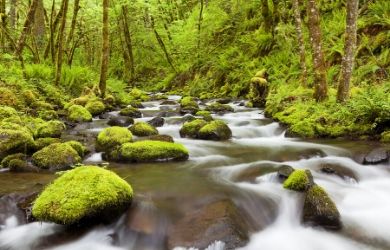
This topic has infiltrated the travel industry too, with new guidelines and standards defining where there are still steps to be taken to reduce carbon footprint. Cruise lines are no exception here. Many of the big players, such as Royal Caribbean, Oceania and MSC, have recognised the need to invest more and more into optimising their ships and reducing or offsetting their carbon emissions.
As of 1 January 2020, the International Maritime Organization (IMO) has introduced a new regulation which requires ships to change from heavy sulphur fuel to more expensive low-sulphur alternatives with a maximum sulphur content of 0.5 per cent compared to the previous content of 3.5 per cent. According to the 2019 Cruise Lines International Association Technologies & Practices Report, 22 billion US dollars are said to have been invested in ships with new, energy-efficient technologies and cleaner fuels.
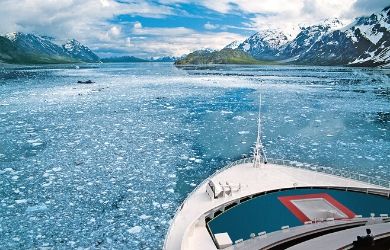
Not only are cruise lines tasked with offsetting their carbon emissions, they also face the ongoing challenge of offsetting negative press, as they are perceived to be heavy polluters. The consensus from the world’s major cruise lines, however, is that the solution to the environment problem is not to stop or limit travelling, but to find alternatives and innovations to ensure more sustainable cruising. Maybe even zero-emissions cruises. Many cruise lines, including those mentioned above, have identified that they need to take part in this movement to become more sustainable, as a healthy planet makes for healthy business. After all, the oceans make up roughly 96.5 per cent of our planet’s water.
But ‘sustainable’ is a pretty abstract word to say the least. We read it in practically every company’s mission statement; we see it every day in almost every context. What does it actually mean? And, more importantly, what does it mean for the cruising industry? CruiseAway has explored just some on-board measures, technology and policies cruise lines have adopted in favour of eco-conscious, sustainable cruising.
Terms and technology
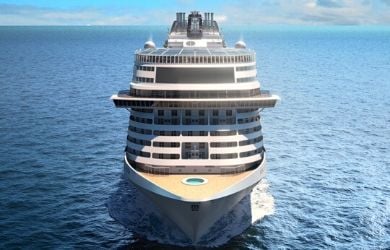
As the saying goes, knowledge is power. That’s why cruise lines are investing heavily in research to find the most environmentally friendly way of sailing the seas. With this research, advances have been made; technology has been tried and tested on board. You might not be able to physically see these technologies whilst you’re cruising, but it’s definitely good to know that they’re there. And it’s good to familiarise yourself with how they work too! So, here’s a list explaining some of the most frequently used technologies installed on cruise ships at the moment.
Air lubrication systems, low-friction hull coatings
| What? | According to Norwegian Cruise Line’s 2017 Stewardship Report, roughly 50 per cent of the total energy use on a ship comes from propulsion power. Air lubrication systems coat the bottom of the ship with air bubbles to reduce friction whilst it moves, which in turn reduces the amount of fuel needed to propel the ship. Optimising ships’ hulls can also include using special environmentally friendly hull paints, which eliminate the growth of barnacles, algae and marine organisms in order to significantly increase hydrodynamic efficiency. Through this coating, cruise lines can also avoid transporting invasive species such as sea snails and sea stars to other cruising areas. |
| Where? | According to MSC, environmentally friendly hull coating is used on all MSC’s ships. In a 2017 report published by Norwegian, this also seems to be the case for 92 per cent of Norwegian’s ships. Thanks to its more energy-efficient hull, MSC’s MSC Grandiosa, released in 2019, uses 28% less fuel compared to its counterpart ships in the Fantasia class. The cruise line claims that this equates to roughly 255 kilogrammes less carbon dioxide per passenger, per cruise. |
ECAs (emission control areas)
| What? | ECAs are sensitive waters where emission levels cannot surpass a certain level set by the MARPOL Convention. This makes it important for cruise lines to invest in technology to reduce their emissions; they can only cruise in these areas if they comply with these guidelines. |
| Where? | Examples of ECAs are waters surrounding Antarctica, North America, the Gulf of Mexico, Kamchatka and the Arctic. |
 |  |
EGCS (exhaust gas cleaning systems)
| What? | Also known as ‘scrubbers’, EGCS are designed to eliminate 99 per cent of sulphur and over 50 per cent of particulates. This technology is considered an important investment for cruise lines, as they need to ensure their cruise ships comply with the previously mentioned sulphur cap set by the IMO. |
| Where? | MSC aims to ensure that 100 per cent of its cruise ships, such as MSC Fantasia and MSC Preziosa, will be equipped with EGCS by the end of 2023. Norwegian has also implemented EGCS on five of its ships, including the Norwegian Sun and the Norwegian Jade, since 2016. |
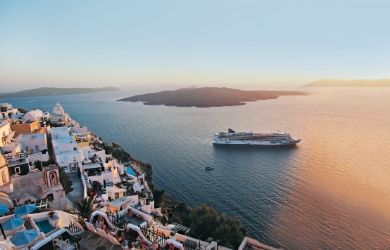
Fuel cell technology
| What? | Fuel cell technology is considered the future of cruising, as it only emits water. The process involves generating emission-free energy through an electrochemical reaction between hydrogen and oxygen. This innovative technology also promises to significantly reduce noise pollution in comparison with conventional systems using marine diesel or heavy fuel oil. |
| Where? | Royal Caribbean intends to implement this technology in all newbuilds of its Icon Class from 2022. According to various sources, the MSC Europa is also set to integrate this new fuel cell technology. |
LNG (liquified natural gas)
| What? | LNG is natural gas (mostly methane) that has been converted to liquid form for simplifying storage and transportation. Considered the world’s cleanest fossil fuel, LNG ensures that ships emit no dust, soot or particles and is, according to CLIA, expected to eliminate sulphur emissions by more than 99 per cent and nitrogen oxide emissions by up to 85 per cent in comparison with conventional fossil fuels. |
| Where? | MSC is set to power some of its future World Class ships with LNG. Princess Cruises also has two LNG ships in the pipeline with expected delivery dates in 2023 and 2025. |
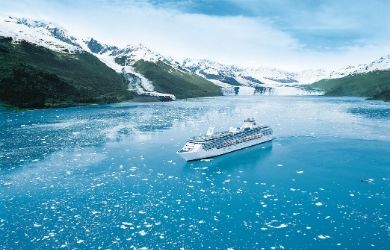 | 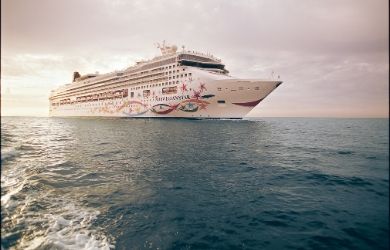 |
Shore power
| What? | Shower power, also known as ‘cold ironing’, ensures that electricity is brought to the ship by connecting to a port’s electric grid and using local power. Once connected, the ship’s engines are turned off, reducing ship emissions whilst the ship is at berth. |
| Where? | Examples of ports where you might find shore power are Hamburg, Juneau, Seattle and Vancouver. Princess ships, such as Coral Princess, Golden Princess and Island Princess, as well Norwegian’s Norwegian Star have all been retrofitted to run on shore power. |
On-board policies
It’s all well and good speaking about this technology, but on-board policies adopted by cruise lines also play a big role in encouraging guests on board to be more sustainable. Unlike the technology we’ve just talked about, these policies are measures that everyday guests like you on board will witness for yourselves. Maybe you could get even some tips here on how to do your bit for the environment!
Efficiency
Efficiency is a big topic to discuss when it comes to sustainable cruising. Many cruise lines, such as Royal Caribbean, Princess and Norweigan use energy-saving LED or fluorescent lighting on board their ships – Royal Caribbean has even installed card-activated cabin lighting and air-conditioning that turns off once veranda doors have been opened. The installation of LED and fluorescent lighting on Norwegian’s Norwegian Jewel and Norwegian Star ships back in 2018 is said to have resulted in a 70 per cent reduction in daily energy consumption and 50 per cent reduced heat output.
Some cruise lines also promote the importance of saving water by installing water reduction technology in kitchens, bathrooms and laundry facilities. Furthermore, Princess encourages its guests to turn off taps and report leaking taps and to reuse towels and linens. This is definitely something you could make sure to do on every cruise!
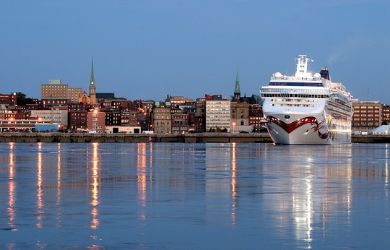 | 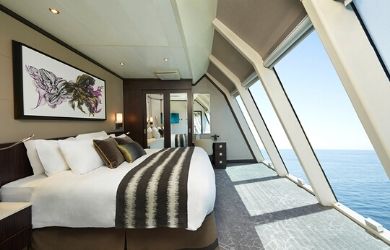 |
On-board learning and experts
Many cruise lines encourage guests on board to engage in important topics – such as environmental protection. For example, Oceania organises on-board lectures on marine life and the environment for its guests. Norwegian employs trained environmental experts on every Norwegian ship; these experts teach young guests about the environment, clean water and how to prevent pollution. Its crew also has to have ‘Environmental Familiarisation Training’ to ensure compliance with environmental policies. Their job is then to be available to answer any questions guests like you might have about the environment. Environmental officers have also been introduced on Carnival and Regent Seven Seas cruise ships.
Seabourn promotes sustainable tourism at World Heritage Sites in its partnership with UNESCO. Through this initiative, the cruise line offers its guests educational lectures on World Heritage Sites by experts. Proceeds collected from the guided tours offered by Seabourn are then donated to UNESCO’s World Heritage Fund.

Single-use plastics
Cruise lines such as Royal Caribbean, Cunard, Oceania, MSC and Regent Seven Seas have chosen to eliminate or reduce single-use plastics on board their ships. This means that guests on these ships might see metal utensils, dispensers instead of small toiletry bottles, and stricter food packaging requirements. Plastic straws have also been banned on many ships. Royal Caribbean has even promised to eventually ban all single-use plastics on board its ships, and Regent Seven Seas has become the first ocean luxury cruise line to eliminate all single-use plastics. Furthermore, Norwegian implemented a Skip the Straw campaign in 2018 to eliminate single-use straws from their entire fleet and from their two private island destinations. Since the start of the initiative, the cruise line claims to have prevented 50 million straws from being used. A worthy new competitor on the seas, Virgin Voyages is going a step further and challenging cruising status quos by apparently offering its guests disposable paper products made of tree-free material.
Sustainable cruising: which measures and technologies are already in place on some of the major cruise ships?
| Cruise line | Ship | EGCS | LNG | Shore power | Hull lubrication | LED/fluorescent lighting | Other | Current cruising region |
|---|---|---|---|---|---|---|---|---|
| MSC Cruises | MSC Grandiosa (2019) | yes | yes | yes | yes | yes | Western Mediterranean | |
| Princess Cruises | Diamond Princess (2019) | yes | yes | yes | yes | Vegan & organic wines on board | Japan | |
| Norwegian Cruise Line | Norwegian Jewel (2018) | yes | yes | yes | yes | Azipod hydrodynamic-hull upgrade & silicone hull paint | Asia Pacific | |
| Royal Caribbean | Quantum of the Seas (2019) | yes | yes | yes | South East Asia | |||
| Cunard | Queen Mary 2 (2016) | yes | yes | Middle East/Asia | ||||
| Virgin Voyages | Scarlet Lady (2020) | yes | yes | Efficient hull design, low-friction hull paint | Caribbean |
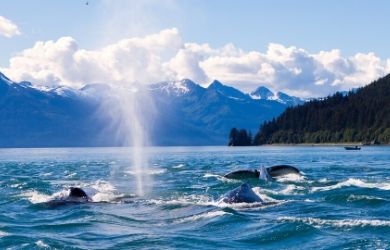
As the topic of sustainable cruising and optimising ships is still very current and fast-developing, it’s hard to tell which current and future innovations or policies we can expect to see on the horizon. Tangible results and stricter cruising regulations prove progress is however being made in creating more sustainable ways of seeing and appreciating the world and its oceans. CLIA has, for example, announced its commitment to globally reduce the rate of carbon emissions in the cruise industry by 40 per cent by 2030. This just goes to show that many more technological changes are set to come our way in terms of sustainable cruising – just watch this space!
Want to experience a cruise on the ships mentioned in this article? Browse our cruises on offer on the CruiseAway website or call our free hotline on 1300 887 590.

